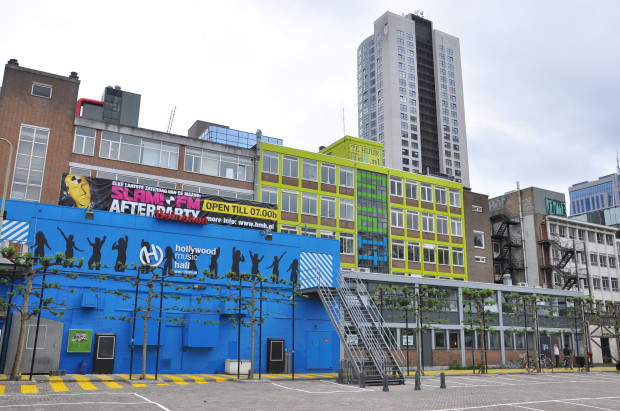Creative Spaces in the City
HSE St Petersburg has hosted a seminar entitled “Creative spaces: dream or dream solution?”, with the participation of Melanie Post van Ophem, former chair of the Rotterdam Council for Arts and Culture, and Hans Karel Wesseling, Consul General of the Kingdom of the Netherlands in St Petersburg.

Organised by the Laboratory of Cultural Economics, the seminar was dedicated to discussing experiences of utilisation of vacant industrial and public buildings and using them to develop contemporary creative spaces.
In his opening address, the Consul General noted “We are interested in leading a dialog on cultural policy. Today, we will be talking about various paths of development of contemporary creative spaces, and how a city can change without destroying its historical heritage.”
Melanie Post van Ophem has spent a long time as chair of the Rotterdam Council for Arts and Culture and advisor to the mayor on such issues. In defining the theme of the seminar, she explained “In the Netherlands we protect architectural monuments, and when we make important decisions we consider not only the needs of the city but the opinions of the citizens. If they protest against the demolition of a building that doesn’t have any particular historical value, we try to preserve it. Today, I want to show how we can use old structures by changing their functions.”
She observed that in Rotterdam, the second largest city of the Netherlands, there are many young people who seek space for cultural growth and the realization of their ideas. As the city council seeks to foster creative youth, Rotterdam has become a springboard for many artists who are just starting out. The city allocates funds to the development of the creative industries.
In Ms Post van Ophem’s words, “This modern term gives art a new shine, but its nature is so multifaceted as to make defining ‘creative industry’ rather difficult. It unites very varied forms of activity, from the administrative to the technical and the artistic – in other words, everything that can relate to the development of creative spaces. Suffice it to say that this sphere unites representatives of 69 professions.”
In her presentation, Melanie Post van Ophem offered some examples which clearly show how an urban structure can change according to the needs of the time.
For example, one urban project involved an old silo. Its main space was turned into a large concert hall and dance stage, while the other rooms were rented out to startups for a small fee. Consequently, an unpopular and low-income area of the city became host to 55 new businesses, including creative ones. This is an example of how industrial zones, the so-called “grey belt” of the city, can receive a new lease of life.
Another case is Rotterdam’s special Witte de Withstraat area, a street which contains five modern art centers and which has become a laboratory of sorts for artistic experimentation. Municipal financial support helped transform a private initiative into a successful project and city landmark.
Other successful projects include the repurposing of a former water park, abandoned buildings and many others.
New possibilities for urban spaces were discussed in a presentation which featured the heads of a variety of creative spaces: the Street Art Museum, the Sergei Kuryokhin Centre for Contemporary Art, Balkon and Bye Bye Ballet, as well as the Russian Guild of Property Managers and Developers.
In concluding the seminar, Valery Gordin, Deputy Director of HSE St Petersburg and Dean of the St Petersburg School of Economics and Management, commented that the university had noted the interest in the subject and decided to hold meetings of this sort regularly. “Our cultural economy laboratory combines an academic environment with creative industry practices, so we always have something to talk about with representatives of the creative and business community.”

